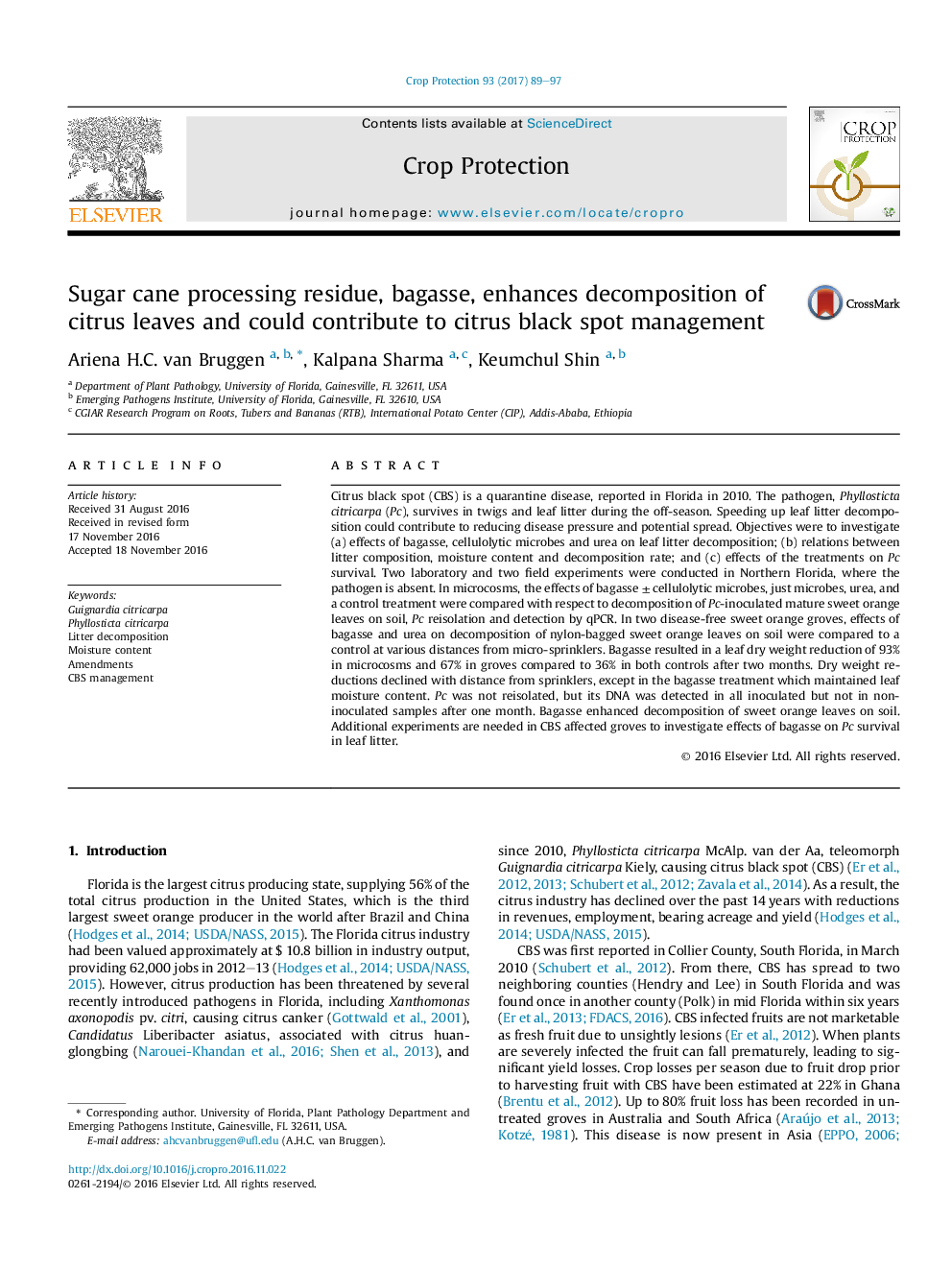| Article ID | Journal | Published Year | Pages | File Type |
|---|---|---|---|---|
| 5761065 | Crop Protection | 2017 | 9 Pages |
Abstract
Citrus black spot (CBS) is a quarantine disease, reported in Florida in 2010. The pathogen, Phyllosticta citricarpa (Pc), survives in twigs and leaf litter during the off-season. Speeding up leaf litter decomposition could contribute to reducing disease pressure and potential spread. Objectives were to investigate (a) effects of bagasse, cellulolytic microbes and urea on leaf litter decomposition; (b) relations between litter composition, moisture content and decomposition rate; and (c) effects of the treatments on Pc survival. Two laboratory and two field experiments were conducted in Northern Florida, where the pathogen is absent. In microcosms, the effects of bagasse ± cellulolytic microbes, just microbes, urea, and a control treatment were compared with respect to decomposition of Pc-inoculated mature sweet orange leaves on soil, Pc reisolation and detection by qPCR. In two disease-free sweet orange groves, effects of bagasse and urea on decomposition of nylon-bagged sweet orange leaves on soil were compared to a control at various distances from micro-sprinklers. Bagasse resulted in a leaf dry weight reduction of 93% in microcosms and 67% in groves compared to 36% in both controls after two months. Dry weight reductions declined with distance from sprinklers, except in the bagasse treatment which maintained leaf moisture content. Pc was not reisolated, but its DNA was detected in all inoculated but not in non-inoculated samples after one month. Bagasse enhanced decomposition of sweet orange leaves on soil. Additional experiments are needed in CBS affected groves to investigate effects of bagasse on Pc survival in leaf litter.
Related Topics
Life Sciences
Agricultural and Biological Sciences
Agronomy and Crop Science
Authors
Ariena H.C. van Bruggen, Kalpana Sharma, Keumchul Shin,
